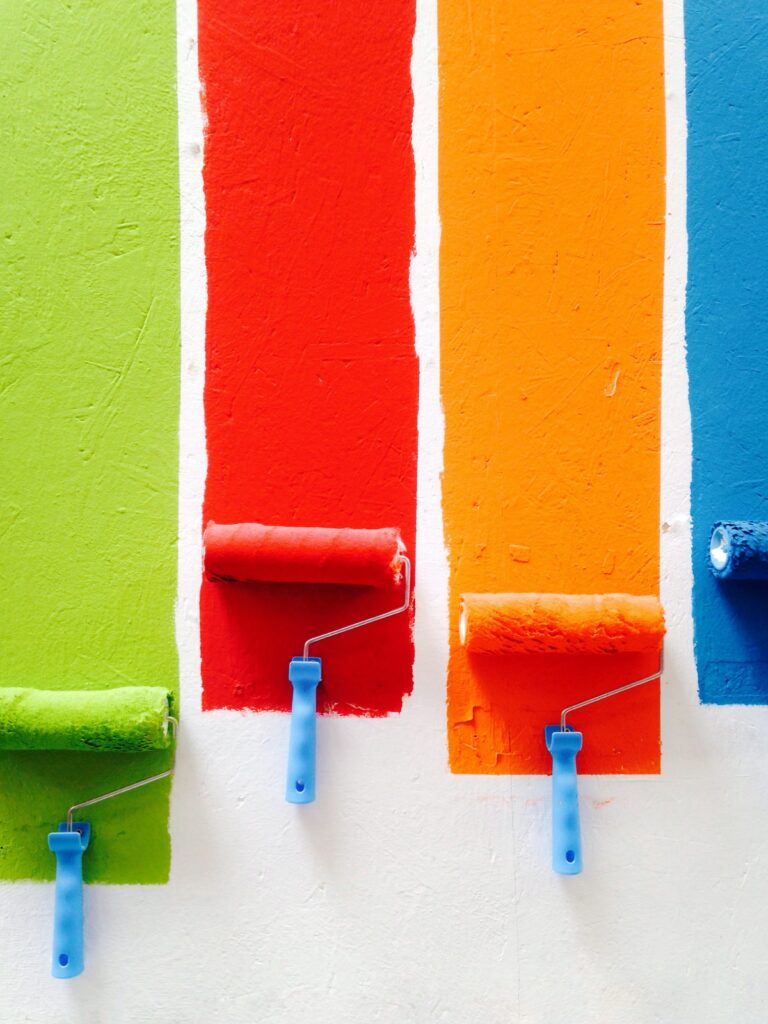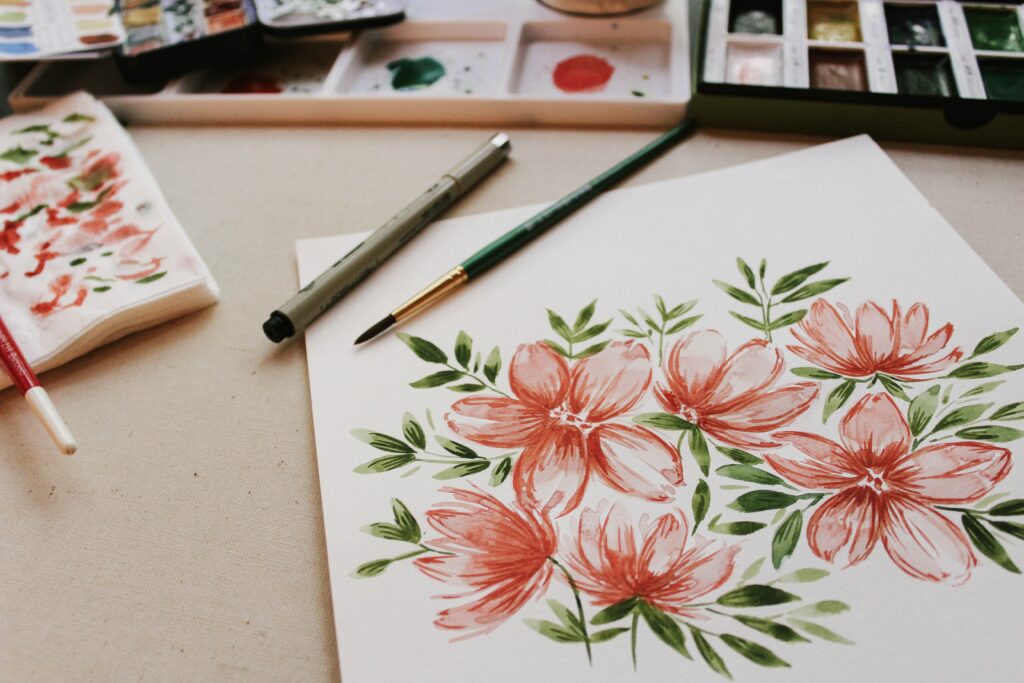Have you ever wondered if acrylic paint is washable? If so, you’re in the right place! In this article, we’ll explore the washability of acrylic paint and whether it’s safe and easy to clean up after your creative endeavors. Whether you’re a seasoned artist or just starting out, knowing whether your paint can be easily washed off surfaces will definitely come in handy. So let’s get started and find out if acrylic paint is washable or not!
What is acrylic paint
Acrylic paint is a type of water-based paint that is made from pigment particles suspended in an acrylic polymer emulsion. It is known for its vibrant colors, versatility, and ability to dry quickly. Acrylic paint is commonly used by artists, crafters, and DIY enthusiasts due to its wide range of applications and ease of use.
Definition of acrylic paint
Acrylic paint is a type of paint that consists of pigment particles suspended in an acrylic polymer emulsion. It is a water-based paint that can be used on various surfaces such as fabric, wood, and canvas. Acrylic paint is known for its ability to create vivid and opaque colors with a smooth and even finish.
Composition of acrylic paint
Acrylic paint is made up of three main components: pigment, binder, and solvent. The pigment provides the color and opacity of the paint, while the binder, which is typically an acrylic polymer, holds the pigment particles together and allows them to adhere to the surface. The solvent, usually water, keeps the paint in a fluid state and allows for easy application. Additionally, acrylic paint may contain additives such as flow improvers, extenders, and thickeners to enhance its performance.
Properties of acrylic paint
Acrylic paint has several properties that make it a popular choice among artists and crafters. Firstly, it is known for its fast drying time, allowing artists to layer and work quickly. It dries to a water-resistant and flexible finish, making it suitable for outdoor use and applications that require durability. Acrylic paint also offers a wide range of colors, from opaque to translucent, and can be easily mixed to create custom shades. It is also known for its versatility, as it can be used on various surfaces and can be applied with different techniques, such as brushing, pouring, or stippling.
Types of acrylic paint
Acrylic paint is available in different formulations to suit specific applications and surfaces. Here are three common types of acrylic paint:
Acrylic paint for fabric
Acrylic paint designed for fabric is specially formulated to adhere to textiles and withstand washing and wear. It is commonly used for fabric painting, screen printing, and textile art. Fabric acrylic paint is often heat-set or ironed to ensure the permanence of the design.
Acrylic paint for wood
Acrylic paint for wood is formulated to provide excellent adhesion to wooden surfaces. It is commonly used for painting furniture, crafts, and woodworking projects. Wood acrylic paint often has a satin or matte finish, and some brands may offer wood stains that mimic the appearance of wood grain.
Acrylic paint for canvas
Acrylic paint for canvas is a versatile paint that can be used for both fine art and decorative purposes. It is designed to adhere well to canvas surfaces, providing excellent coverage and color vibrancy. Canvas acrylic paint is available in a wide range of consistencies, from fluid to heavy body, allowing artists to achieve different effects and textures.

This image is property of images.unsplash.com.
Advantages of acrylic paint
acrylic paint offers several advantages that make it a popular choice among artists and enthusiasts. Here are some key benefits of using acrylic paint:
Versatility
Acrylic paint is highly versatile and can be used on a wide range of surfaces, including canvas, paper, wood, fabric, and more. It can be applied with brushes, palette knives, sponges, or even poured and dripped for abstract effects. This versatility makes acrylic paint suitable for various art styles and techniques.
Fast drying time
One of the notable advantages of acrylic paint is its fast drying time. Unlike oil paints that can take days or even weeks to fully dry, acrylic paint dries quickly, typically within 15 to 30 minutes. This fast drying time allows artists to work efficiently and layer colors without waiting for extended periods.
Long-lasting durability
Acrylic paint is known for its durability and longevity. Once dry, it forms a water-resistant and flexible film that can withstand environmental factors like humidity and temperature changes. This makes acrylic paint suitable for both indoor and outdoor applications. Additionally, acrylic paintings can retain their color vibrancy and quality for years without fading or yellowing.
Is acrylic paint washable?
The washability of acrylic paint depends on various factors, including the type of acrylic paint used and the surface it is applied to.
Differences between washable and non-washable acrylic paint
Some acrylic paints are labeled as “washable,” meaning they can be easily removed or washed off from surfaces, while others are labeled as “non-washable” and may be more resistant to washing. The washability of acrylic paint is determined by the type and amount of binder used in the formulation.
Factors affecting washability of acrylic paint
The washability of acrylic paint can also be influenced by the porosity of the surface it is applied to. For example, acrylic paint tends to adhere more strongly to fabric surfaces, making it less washable compared to surfaces like glass or plastic. The method and products used for washing can also affect the removal of acrylic paint stains.

This image is property of images.unsplash.com.
Washing acrylic paint from different surfaces
While acrylic paint is not always completely washable, there are methods to remove it from various surfaces. Here are some tips for washing acrylic paint from common surfaces:
Removing acrylic paint from fabric
To remove acrylic paint from fabric, start by gently scraping off any excess paint using a blunt knife or spoon. Then, rinse the stained area with cold water to flush out as much paint as possible. Next, pretreat the stain by applying a small amount of liquid dish soap or laundry detergent to the affected area. Gently rub the soap into the fabric and let it sit for a few minutes. Afterward, rinse the fabric thoroughly with cold water and launder as usual.
Removing acrylic paint from wood
When removing acrylic paint from wood surfaces, it is important to act quickly. Begin by blotting up any wet paint with a clean cloth. Then, dampen a clean cloth or sponge with warm soapy water and gently scrub the painted area. If the paint has dried, you can use a mild solvent like rubbing alcohol or nail polish remover on a cotton ball to soften the paint. Once the paint is softened, wipe it away with a clean cloth. Finally, rinse the area with water and dry it thoroughly.
Removing acrylic paint from canvas
To remove acrylic paint from a canvas, start by scraping off any excess paint with a palette knife or the edge of a credit card. Then, mix a solution of mild soap and warm water. Dip a clean cloth or sponge into the soapy water and gently blot the stained area, being careful not to scrub too vigorously. Rinse the cloth or sponge with clean water and continue blotting until the paint residue is removed. Once the paint is gone, let the canvas air dry or use a hairdryer on a low setting to speed up the drying process.
Tips for washing acrylic paint
When washing acrylic paint from surfaces, it is important to follow some tips to ensure successful stain removal without damaging the material.
Using water and soap
In most cases, warm soapy water is sufficient for removing acrylic paint stains. Combine a mild liquid soap or dish detergent with warm water to create a gentle cleaning solution. Avoid using harsh chemical cleaners, as they can damage the surface or fabric.
Pre-treating stained areas
For stubborn or dried acrylic paint stains, pre-treating the area with a stain remover or solvent can help loosen the paint and make it easier to remove. Always test the stain remover on a small, inconspicuous area first to ensure it does not cause any damage.
Avoiding excessive scrubbing
When washing acrylic paint stains, it is important to avoid excessive scrubbing, as this can spread the paint and potentially damage the surface or fabric. Instead, gently blot or dab the stained area with a cloth or sponge to lift the paint particles.

This image is property of images.unsplash.com.
Preventing acrylic paint stains
Taking preventive measures can help minimize the chances of acrylic paint stains. Here are some tips for preventing acrylic paint stains:
Using protective covers
When working with acrylic paint, consider using protective covers or drop cloths to protect surfaces like tables or floors. This can help catch any accidental spills or drips and prevent them from seeping into porous materials.
Cleaning up spills immediately
In the event of a spill or accidental drips, act quickly and clean up the paint immediately. Use a damp cloth or paper towel to blot the spilled paint and prevent it from spreading. Remember to avoid rubbing the paint, as it can drive it deeper into the material.
Using a palette or tray
Using a palette or tray to hold and mix acrylic paint can help prevent spills and drips. By keeping the paint contained in a designated area, you can minimize the chances of accidental stains on surfaces.
Alternative washable paints
If washability is a priority, there are alternative paint options available that are specifically designed to be easily washable.
Washable acrylic paint brands
Some brands offer specifically formulated washable acrylic paints that can be easily removed from surfaces. These paints are designed to be more water-soluble and can be washed off with just water and mild soap.
Watercolor as a washable alternative
Watercolor paints are another alternative to consider, as they are inherently water-soluble and can be easily washed off from most surfaces. They are available in a wide range of colors and offer a unique transparent effect that can be layered to create different tones and shades.

Conclusion
Acrylic paint is a versatile and widely used medium that offers vibrant colors, fast drying time, and long-lasting durability. While it may not always be completely washable, there are methods to remove acrylic paint stains from various surfaces. By following the tips and techniques mentioned in this article, you can effectively wash acrylic paint and prevent stains from occurring. Whether you are an artist, crafter, or DIY enthusiast, acrylic paint provides endless possibilities for creative expression.



